| 1 | The meanest of Chile’s 7 snakes |
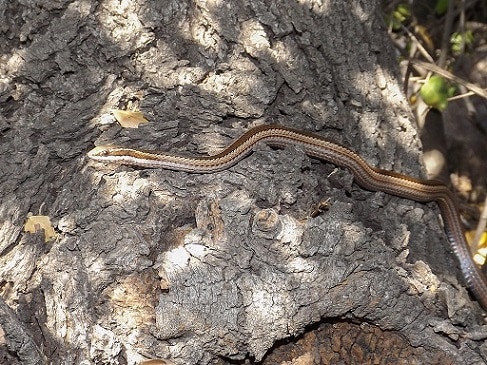
The thin, spinelike country of Chile is an oasis of safety when it comes to South American snakes. Compared to 130 in Argentina or 335 in Peru, Chile only has 7 snake species, with 1 being located far offshore near Easter Island. Chile is so isolated that it’s the only South American country not to contain the boa constrictor.
Of this tiny handful, just 2 of Chile’s snakes are venomous, with the most dangerous being the Chilean long-tailed snake (Philodryas chamissonis). At 1.4 metres, this is also the longest snake in Chile, and easily the most commonly encountered, by gardeners and dog walkers in parks alike. This is a stripy snake with a deep chocolate brown stripe on its back, flanked by two paler stripes which vary from yellow to white.
Compared to the blotchy boa constrictor, this is a far neater and more ordered looking snake. It’s very simple to distinguish from Chile’s other venomous snake, Tachymenis chilensis, because the latter is only 40-60cm long.
The Chilean long-tailed snake has a very long tail, at a full one third of its body length. Despite being the second most venomous snake in Chile, this species has only bitten 7 people since 1834 (officially anyway), none of whom died. All 7 were aged 11-25, and 6 were males who picked up the snake up in a rush of bravado.
| 2 | Why Chile’s snakes are unusual |
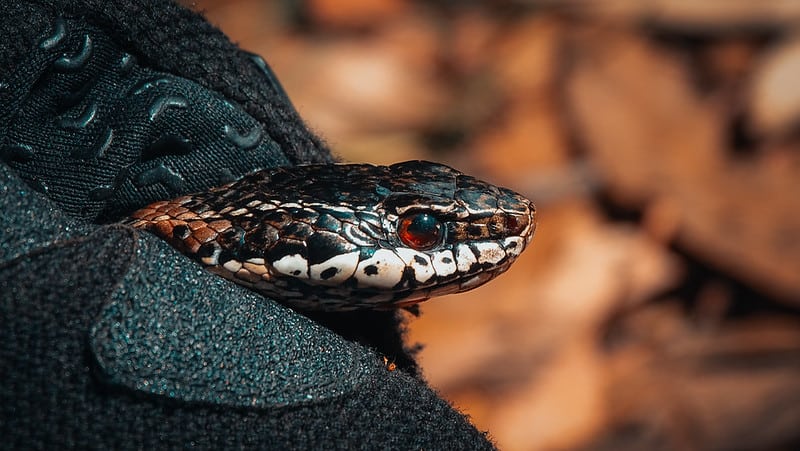
Philodryas chamissonis is one of the 3/6 snakes in mainland Chile belonging to the Philodryas genus. Its believed that their distant ancestors reached Chile from south Peru in the Miocene era, which lasted from 20 million to 5 million years ago. Around this time, the punishing Atacama desert had yet to form, and the Andes mountains to the east were 2000 metres short of their current height.
Over the next few millions of years, these ancestor snakes became trapped as the Andes gradually grew, due to the ever grinding forces of plate tectonics. The highest Andes peak today is Aconcagua at 6961m, and the lowest mountain pass accessible to migrating animals is 4600 metres, almost the height of Mont Blanc. The Andes is one of the strongest natural barriers to wildlife in the world, and it runs down almost the entire eastern side of Chile.
Consequently, Chile has extremely distinct wildlife compared to the rest of South America, and the Chilean long-tailed snake is just another example. None of Bolivia’s or Argentina’s snakes have migrated across, and none of Chile’s snakes have migrated out.
| 3 | Capable of swelling your shoulder |
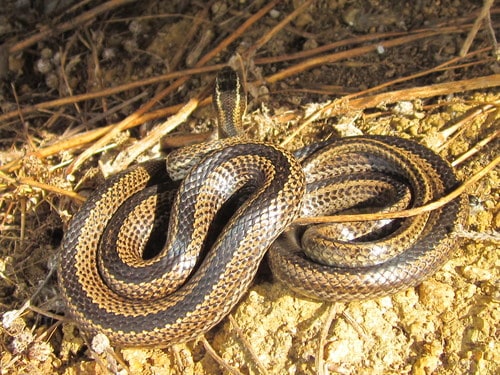
The venom gland of the long-tailed snake is white, and the venom itself has a milky-white appearance. The venom itself lacks any neurotoxins, but is instead notorious for haemorrhaging and swelling. Some ingredients in its deadly soup include snake venom metalloprotease type-III (SVMP), snake venom serine protease (SVSP), cysteine-rich secretory protein (CRISP), C-type lectin-like protein (α and β CLP), and natriuretic peptide (NP). All these attack skin and muscle proteins, and other symptoms include nausea headaches, and dizziness.
Philodryas chamissonis venom has been tested on mice, where it caused haemorrhaging of the intestines, spleen and kidneys. With humans this bleeding and haemorrhaging is normally confined to the bite zone. But the more noticeable symptom of this particular snake is swelling, which can spread well beyond the bite zone to the chest and shoulders.
It’s normal for the victim’s arm to swell up like a balloon, making it completely immobile. This can take 10 days to wear off, making subtle movements like writing or tooth brushing difficult for a while. A cool feature with this snake is that the teeth often remain lodged in the bite victim.
| 4 | How a bite unfolds |
One bite involved a 14 year old girl camped with her family near Quisco in Chile’s Valparaíso Region. The girl bent down to pick up a ball in the bushes when she felt a squeezing sensation on her left hand. She pulled it up to see a long-tailed snake biting into the back of her hand, between the thumb and left index finger. The girl yanked hard and removed the snake within several seconds, but it hadn’t given up yet: it responded by coiling around her left arm. Then her parents arrived and dealt a killing blow, storing the snake in a box and measuring it at 135cm with a 37cm tail.
It took 30 minutes for the intense pain and swelling to kick in at the bite site. Soon the girl was in Carlos van Buren hospital, Valparaís, where she was given a bevy of medications: intravenous corticosteroids, antihistamines, and ampicillin. Her fingers were ice cold, and by the 24 hour mark she was suffering from a low grade fever, headache and nausea. Her entire upper left extremity was in extreme pain, yet with no bleeding.
Her arm and forearm remained swollen until the 48 hour mark, until the medications finally kicked in and all symptoms began to gradually fade. At 72 hours, the doctors discontinued the antihistamines and corticosteroids and by day 4, the girl was released, under strict instruction to take an antimicrobial for another 6 days.
| 5 | Neck flaring and death faking |
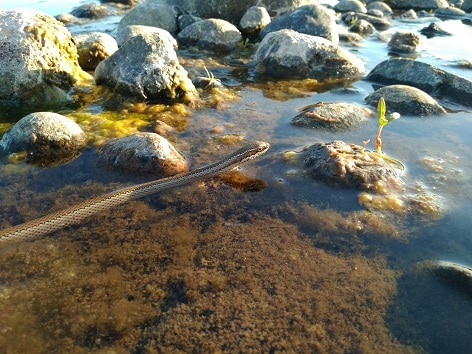
The Chilean long-tailed snake sticks to two tried and tested snake defensive tricks. The first is hooding, or neck flaring, the intimidation trick most infamously used by cobras. Though less extreme than cobras themselves, Philodryas chamissonis also expands its neck in a sneaky attempt to appear larger than it really is, to give hungry predators like hawks a second thought.
The second trick is even sneakier – thanatosis, or playing dead. When a predator approaches, Philodryas chamissonis responds by going completely limp. In this floppy lifeless state, the Chilean long-tailed snake can even be picked up and manhandled without breaking the deception. In one study, a scientist waited 1 metre away from a “dead” long-tailed snake for 5 minutes, before it finally poked its head up, waved its tongue, and slithered away.
That said, this species lacks one super-evolved trick: unlike the grass snake of Britain, which also plays dead and likes to open its mouth wide and loll out its tongue to add to the effect, the Chilean-long tailed snake always keeps its mouth shut.
| 6 | Dabbles in cannibalism |
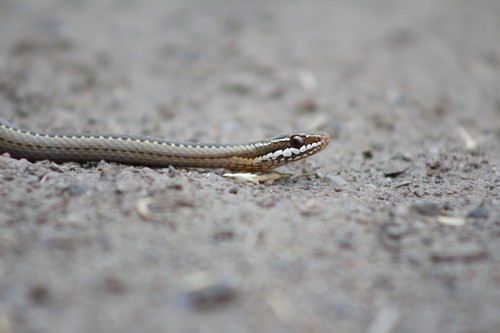
The Chilean long-tailed snake will eat just about anything, and that means anything. They have no hesitation about eating their own number, as shown by a tale from February 2018 when scientists were exploring a forest trail in Chile’s Valparaiso Region. This trail crossed a small stream in a creek, and there they spotted two long-tailed snakes, the larger of which began swallowing the other.
For the next hour, they watched as the second snake was devoured from head almost to tail, extending halfway down the larger snake’s body. By some miracle, the scientists spooked the larger Philodryas chamissonis and it completely regurgitated its prey. Then the two fought a battle; despite having been almost completely swallowed a few seconds before, the smaller Philodryas chamissonis was able to hook its fanged mouth into the other snake and wrestle with it for dominance.
In the end, both long-tailed snakes fled in opposite directions. In January 2020, the same scientists spotted another crazed cannibal Philodryas chamissonis, this time coiled beneath a shrub where it was swallowing a young member of the species, starting with the tail. This brutal act took place in Chile’s Coquimbo Region.
| 7 | Chile’s top nest raider |
The single favourite food group of a Chilean-long tailed snake is lizards, but when adults pass a certain length, they sometimes graduate to birds and mammals. To acquire these birds, they conduct discreet raiding parties on baby birds in their nests. Philodryas chamissonis is an expert climber, and has been observed climbing 5.5 metres up a Monterey pine tree, and 1.9 metres up an olivillo tree.
The bird was the same in both trees: Aphrastura spinicauda, also known as the Thorn-tailed rayaito. This species is a cavity nester, hiding its hatchlings in natural chambers in the tree’s gnarly trunk. In fact, the long-tailed snake focuses on cavity nesters generally.
Philodryas chamissonis isn’t the ultimate tree climber, having never been spotted on the thinnest, highest branches like the golden tree snake. However, they’re able to slither completely vertically, by instinctively selecting the most irregular, fissured bark. The rayaito is a bird which visits its nested hatchlings approximately 25 times per hour, so it’s believed that the long-tailed snake identifies chicks by the squawking, flapping presence of adult birds.
| 8 | Other prey: fond of lizards |
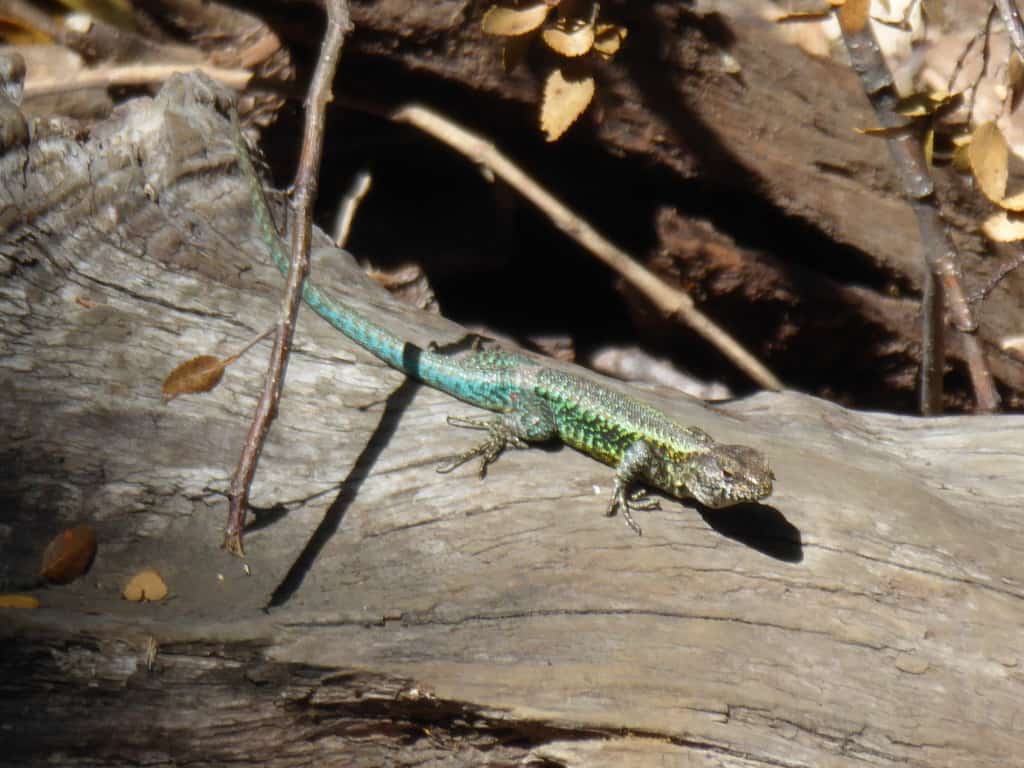
The Chilean long-tailed snake eats many prey, but is particularly adapted to members of the Liolaemus reptile family.
Liolaemus chiliensis – AKA the Chilean tree lizard. A mostly grey, 25cm reptile with a rich green stripe down its back. Known for its distress call like a squeaking sound, which triggers intense fear in other lizard species.
Liolaemus tenuis – the jewel lizard/tree lizard. Less than 10cm long. Males are rich green with an even richer aqua-coloured tail. The long-tailed snake swallows them headfirst, as spotted in 2012. The jewel lizard eats insects and mostly dwells in trees.
Dromiciops gliroides – AKA the colocolo opossum. The sole remaining member of an ancient order of marsupials called Microbiotheria. This family came into being over 40 million years ago and has extinct members strewn all over South America, and even west Antarctica, in the form of fossils. The colocolo opossum is only found in Chile, plus Argentine border regions. A tree dweller which occasionally ventures to the ground, where the long-tailed snake is waiting.
Liolaemus pictus – AKA the painted tree iguana, an iguana with incredible camouflage. Its scales look like a rainforest transplanted into scale form, with intricate patterns of rich green and jet black. A strong, muscular iguana which lives solely in Chile and western Argentina.
| 9 | Hunting style: chase and intercept |
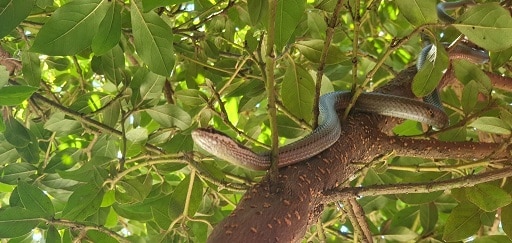
The Chilean long-tailed snake probably burns a hefty amount of calories in its hunting missions, as it uses a straightforward pursue and pounce strategy. Philodryas chamissonis will usually pounce on an unsuspecting lizard, seize it tightly with its jaws to inject venom, before applying one wraparound length of constriction for good measure. The venom does most of the work, but the tight, constricting stranglehold is a virtually unbeatable backup. With mammals and birds, Philodryas chamissonis will never release its iron jaw grip until it senses its prey is dead, but they swallow small lizards far more quickly.
Unlike some snake species, which leap forward mainly with their raised upper body (with the rest coiled like a spring), the long-tailed snake pounces on prey using almost its entire body. Philodryas chamissonis swallows the majority of its prey headfirst, as detailed in a 1992 study. 18/23 prey were swallowed headfirst, including 9 frogs, 6 lizards, and 2 mammals, while 3 frogs and 2 lizards were swallowed tail first. Scientists don’t know why, although the snake probably doesn’t either.
| 10 | Chile’s top home invader |
After its discovery in 1835, the Chilean long-tailed snake was long thought to be a day-faring animal, but a study released in November 2012 spotted a snake by a paved road in the darkness of night, in Cuesto Lo Prado, Santiago. The snake was alert and crossed the road like a bullet when the scientists treaded closer, vanishing into the night.
Of the three Philodryas snake species living in Chile, the long-tailed snake is by far the most likely to invade people’s houses, as P. simonsii, and P. tachymenoides live more remotely. In 2019, mother Nicol Orellana was attempting to sleep, but was interrupted by her young son yelling at the top of his lungs. When Orellana noticed a long-tailed snake coiled up in the kitchen door, she was forced to sidle past it to retrieve her son from the garden.
When she locked the door on the way back, the snake tried to force its way inside, before retreating to a tree in Orellana’s garden. Her friend then arrived, and shoved his hand into the leafy branches of the tree to retrieve the snake, but was bitten on the finger.
In another 2019 incident, a whole nest of long-tailed snakes was found below debris on a patio in Villa Alemana, before being stuffed in a bag and released in the hills. Another one somehow entered a cellar, in the commune of Pica.
